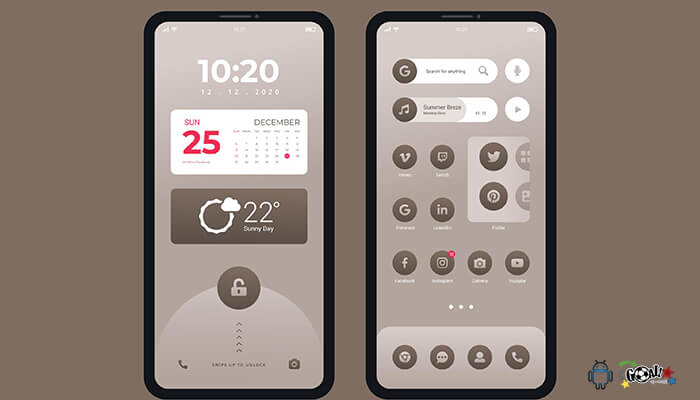The navigation bar is the menu that appears at the bottom of your screen – it’s the basis for navigating your device. However, this is not set in stone; You can customize the layout and order of the recent button, home button, and back button, or even make it disappear entirely and use gestures to navigate your device instead.
I am sure you will be surprised to know that you can change the navigation bar on Samsung devices. This will apply to any Samsung, especially devices No need to download anything.
Don’t Miss: Technical Skills For Marketing Advance
About Customizing the Navigation Bar:
The navigation bar on your Galaxy device is the area at the bottom of the screen that houses the navigation buttons, typically the back button, home button, and recent apps button. Samsung offers a range of options to tweak and personalize this essential aspect of your device, allowing you to tailor it to your preferences.
How to Change Navigation Bar Samsung?
In order to change the Navigation Bar on Samsung devices do the following
1. Go to your settings.
2. Next go to Display.
3. Select Navigation Bar.
4. Now choose Buttons or Swipe Gestures as your style. Gestures will remove the buttons and if you so choose buttons you can switch them around easily.
That’s about it doing this will definitely change up the Navigation Bar and make your device function as you like. Can be handy if you are left-handed or simply want to mix things up a bit.
If the guide was useful at all then please share, comment, and feel free to check out more guides and tutorials that we have.
Use the Navigation Buttons
The classic Navigation bar has the Recents, Home, and Back buttons at the bottom of your screen. It is the default navigation method on all Galaxy phones and tablets. Here are what the three buttons do:
Recents: The button to the far left. When you tap this, your recently opened apps will appear.
Home: The button in the very center. Tap this to be taken to the Home screen.
Back: The button to the far right. Tap this to go back to the previous screen.
Please be aware that the navigation bar may disappear when using certain apps such as gaming apps or video services. While using these apps you can temporarily swipe up to see the bar.
Button Order
You can also adjust the order of the buttons on the Navigation bar.
From Settings, tap Display, and then tap Navigation bar. Make sure Buttons are selected, and then you can choose your desired button setup at the bottom of the screen.
Note: This option will also affect the location you swipe from when using Swipe gestures.
Features of Customizing Navigation Bar:
1] Button Reordering: Samsung Galaxy devices offer a simple and intuitive way to rearrange the navigation buttons. You can easily move the Back, Home, and Recent Apps buttons to a more convenient order based on your preferences.
- Go to Settings.
- Select Display.
- Tap on the Navigation Bar.
- Choose Button layout.
- Drag and drop the buttons to reorder them as desired.
2] Navigation Bar Color Customization: Express your personal style by changing the color of the navigation bar. Samsung provides a range of color options to match your device’s theme or your mood.
- Navigate to Settings.
- Select Display.
- Tap on the Navigation Bar.
- Choose Color.
- Select your preferred color from the palette.
3] Gesture Controls: For those who prefer a gesture-based navigation system, Samsung Galaxy devices offer an alternative to the traditional button layout. You can swipe and tap to navigate your device.
- Go to Settings.
- Select Display.
- Tap on the Navigation Bar.
- Choose Full-screen gestures.
- Follow the on-screen instructions to enable and customize gesture controls.
4] Additional Shortcut Buttons: Enhance your navigation bar with additional shortcut buttons for quick access to your favorite apps or functions.
- Navigate to Settings.
- Select Display.
- Tap on the Navigation Bar.
- Choose More options.
- Enable additional buttons and customize their functions.
5] Hide Navigation Bar: For a full-screen immersive experience, you can choose to hide the navigation bar and use gestures or other methods for navigation.
- Go to Settings.
- Select Display.
- Tap on the Navigation Bar.
- Choose Full-screen gestures or Auto-hide.
Use Swipe Gestures
You can use gestures instead of buttons to navigate your device if it’s easier, or if you want to remove buttons from your screen for a less cluttered look.
- Go to the Settings option, and tap Display.
- Then, Tap the Navigation bar, and then choose Swipe gestures.
- Turn on gesture hints for help with where to swipe, and turn on the display button to hide the keyboard to enable buttons when using portrait mode. Additionally, you can block gestures with the S Pen so you don’t accidentally activate a command while drawing or writing.
- Click the More options to edit the direction you need to swipe.
Conclusion
In conclusion, the ability to customize the navigation bar on your Samsung Galaxy phone or tablet provides a unique opportunity to tailor your device to your preferences. Whether you prioritize efficiency, aesthetics, or a seamless gesture-based experience, Samsung Galaxy devices offer a wide range of options to enhance your user interface.
The customization features mentioned in this guide empower users to take control of their device’s navigation, creating a more personalized and enjoyable interaction.

1 thought on “How To Customize Navigation Bar On Your Galaxy Phone Or Tablet”